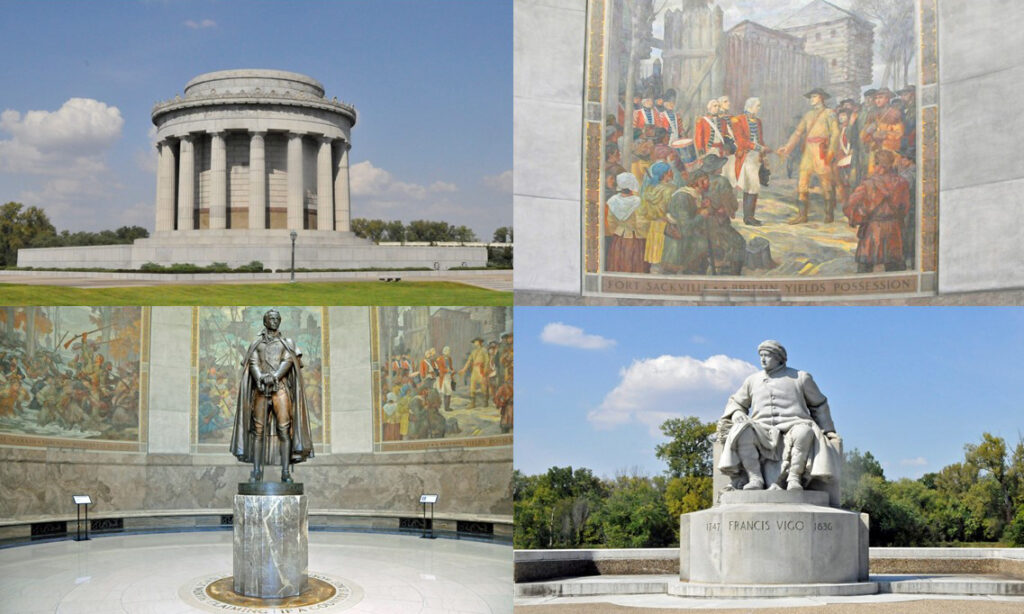George Rogers Clark National Historical Park, along the Wabash River in Vincennes, honors the young leader of a daring American military campaign.
When the American Revolution began, the British Province of Quebec included the land north of the Ohio River between the Mississippi River and the Appalachians. Quebec Lieutenant Governor Henry Hamilton, stationed at Fort Detroit, enforced a royal proclamation barring further European settlement by encouraging Native Americans to attack settlers. In 1777, 25-year-old George Rogers Clark convinced Virginia Governor Patrick Henry to authorize him to recruit volunteers to attack British outposts. During 1778, Clark and 175 frontiersmen captured Fort Kaskaskia, along the Mississippi, and Fort Sackville, along the Wabash. Hamilton soon recaptured Fort Sackville. After learning from Italian ally Francis Vigo (for whom Vigo County was named) that Hamilton was there, Clark led 170 American and French volunteers through harsh winter conditions from Kaskaskia back to Fort Sackville. A surprised Hamilton surrendered and was taken prisoner on February 25, 1779. Virginia then claimed Quebec Province south of the Great Lakes, which later became the Northwest Territory. Clark, hailed as the “Conqueror of the Old Northwest,” was supported later in life by his brother William, co-leader of the Lewis and Clark Expedition.
In the 1930s, Indiana and the United States jointly erected a classical-style circular memorial to George Rogers Clark (for whom Clark County was named) on the presumed site of Fort Sackville. The 80-foot-tall granite structure features a dome resting on 16 columns. Writing above the columns reads: “The Conquest of the West – George Rogers Clark and The Frontiersmen of the American Revolution.” Inside, a 7.5-foot-tall bronze statue of a uniformed young Clark is surrounded by seven 16-feet by 28-feet murals depicting scenes from his famous expedition. The memorial grounds became a National Historical Park in 1966 and include a riverside statue of Vigo.
